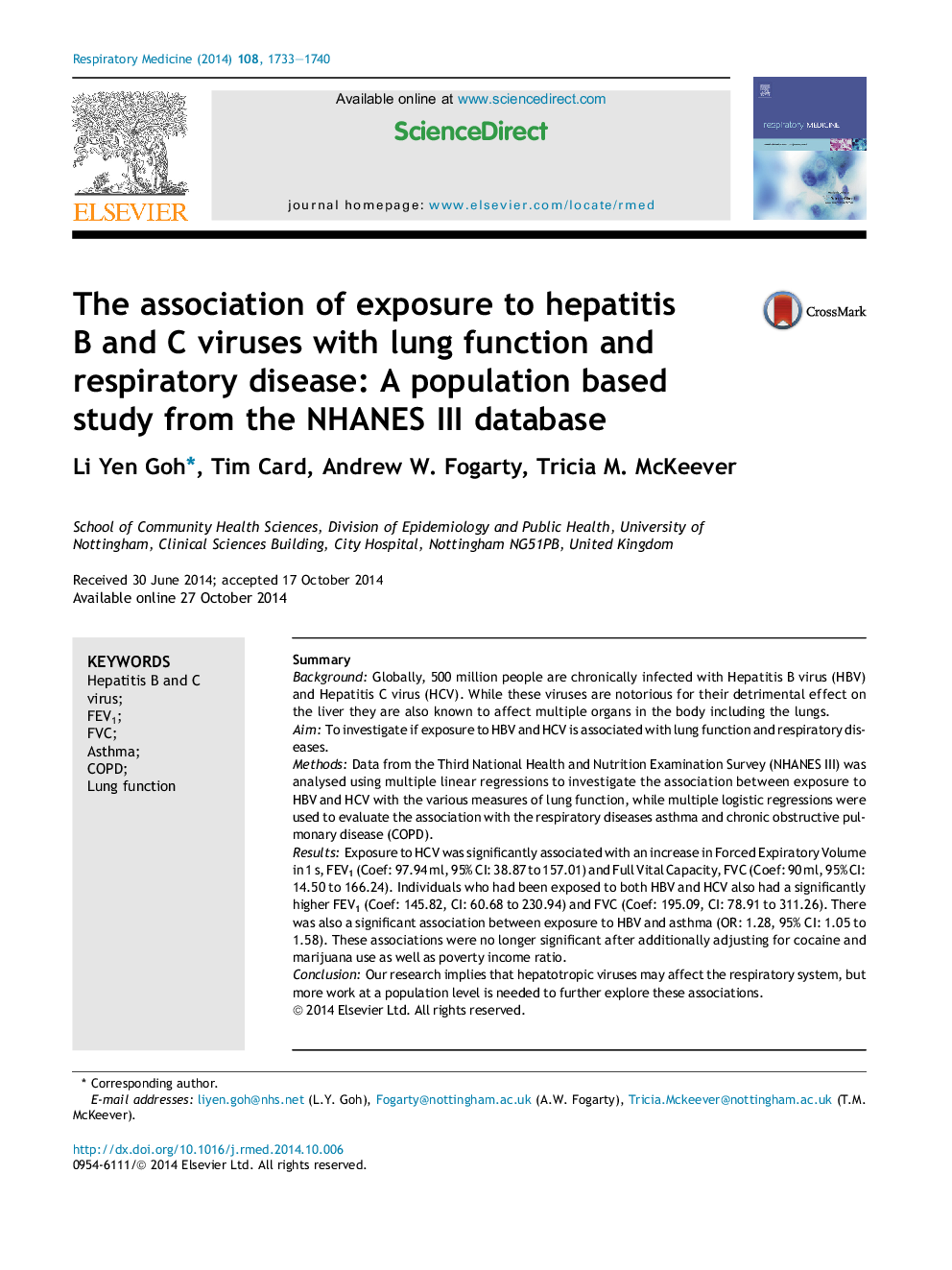| Article ID | Journal | Published Year | Pages | File Type |
|---|---|---|---|---|
| 6241922 | Respiratory Medicine | 2014 | 8 Pages |
SummaryBackgroundGlobally, 500 million people are chronically infected with Hepatitis B virus (HBV) and Hepatitis C virus (HCV). While these viruses are notorious for their detrimental effect on the liver they are also known to affect multiple organs in the body including the lungs.AimTo investigate if exposure to HBV and HCV is associated with lung function and respiratory diseases.MethodsData from the Third National Health and Nutrition Examination Survey (NHANES III) was analysed using multiple linear regressions to investigate the association between exposure to HBV and HCV with the various measures of lung function, while multiple logistic regressions were used to evaluate the association with the respiratory diseases asthma and chronic obstructive pulmonary disease (COPD).ResultsExposure to HCV was significantly associated with an increase in Forced Expiratory Volume in 1Â s, FEV1 (Coef: 97.94Â ml, 95%Â CI: 38.87 to 157.01) and Full Vital Capacity, FVC (Coef: 90Â ml, 95%Â CI: 14.50 to 166.24). Individuals who had been exposed to both HBV and HCV also had a significantly higher FEV1 (Coef: 145.82, CI: 60.68 to 230.94) and FVC (Coef: 195.09, CI: 78.91 to 311.26). There was also a significant association between exposure to HBV and asthma (OR: 1.28, 95%Â CI: 1.05 to 1.58). These associations were no longer significant after additionally adjusting for cocaine and marijuana use as well as poverty income ratio.ConclusionOur research implies that hepatotropic viruses may affect the respiratory system, but more work at a population level is needed to further explore these associations.
